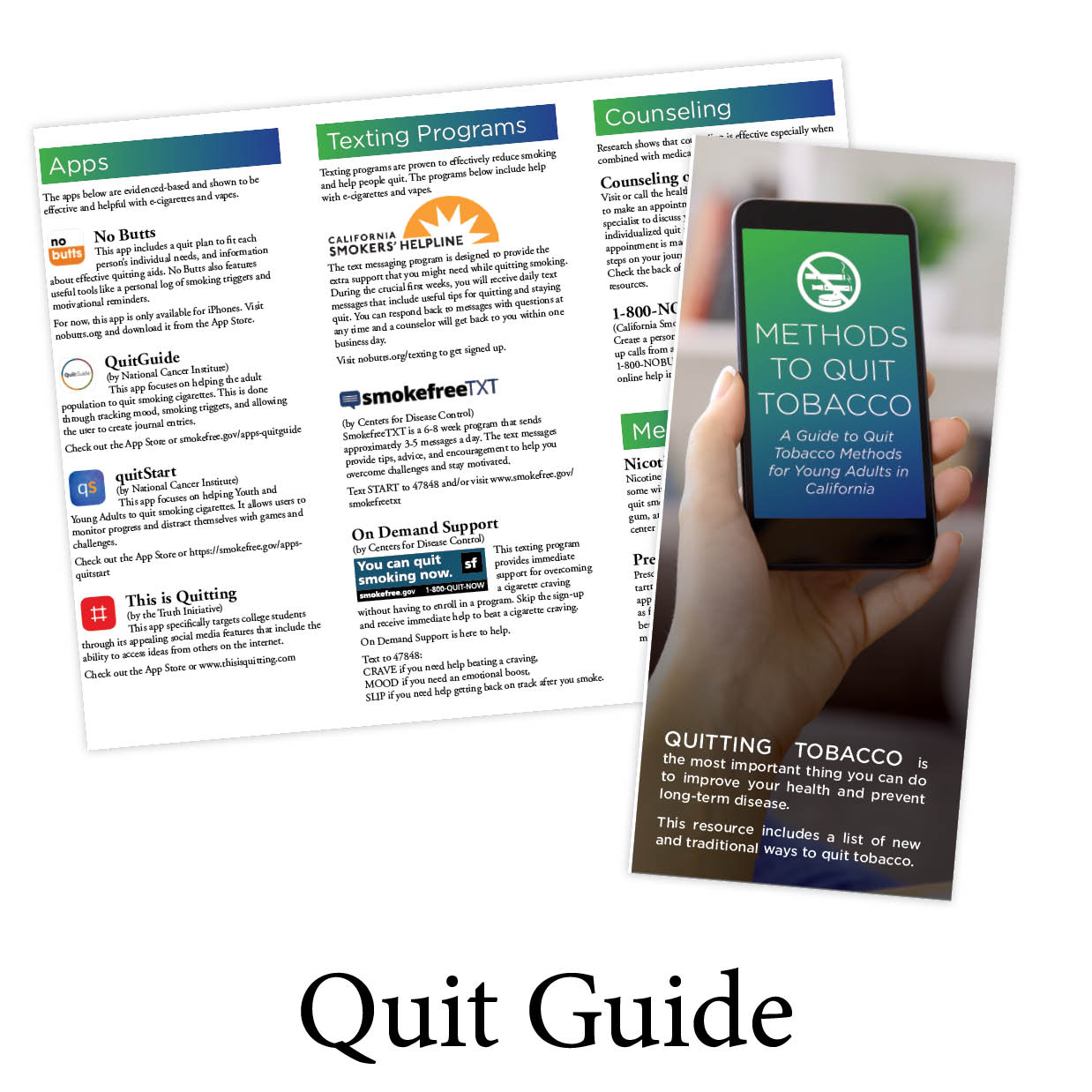Tobacco Treatment on Campus
Strong tobacco policies foster a campus culture of health and well being for staff, faculty, and students on college and university campuses. An integral feature of successful tobacco policies is the availability of tobacco treatment services. Offering help to quit is also an essential component of good policy enforcement. Tobacco-users should not feel singled out by a tobacco-free policy rather they should feel supported. Tobacco-free policies are about weakening the tobacco industry, not tobacco users.
Assessing Your Tobacco Treatment Services on Campus
These Ten Key Recommendations come from the gold-standard guide from Health and Human Services, Treating Tobacco Use and Dependence: 2008 Update—Clinical Practice Guideline. Use these guidelines as a way to assess the treatment services that you are providing on campus. Download this ten item checklist by clicking here.
Easy
1.Have a system in place to ensure every patient is asked whether or not they use tobacco and their answer is documented.
2. Medical providers should, at a minimum, use brief tobacco treatment interventions.
3. Tell tobacco users about the California Smokers’ Helpline to help them quit.
4. Make sure patients and clinicians both have access to resources (brochures, pamphlets, a list of community services, medication information sheets, etc.) that will help patients quit tobacco.
Moderate
5. Medical providers should encourage tobacco users to quit by using both counseling AND medication (as medically appropriate).
6. Medical providers/healthcare professionals should use “motivational interviewing” to increase tobacco users’ motivation to quit.
7. Provide trainings (e.g. lectures, workshops, in-services) that teach clinic staff about tobacco treatment and each person’s responsibility to help patients quit.
Advanced
8. Provide intensive counseling (multiple visits for longer periods of time) to patients, including individual (one-on-one), group and/or phone counseling.
9. Dedicate a staff member at your clinic to work on tobacco treatment.
10. Evaluate your tobacco treatment efforts and provide performance feedback to clinicians







